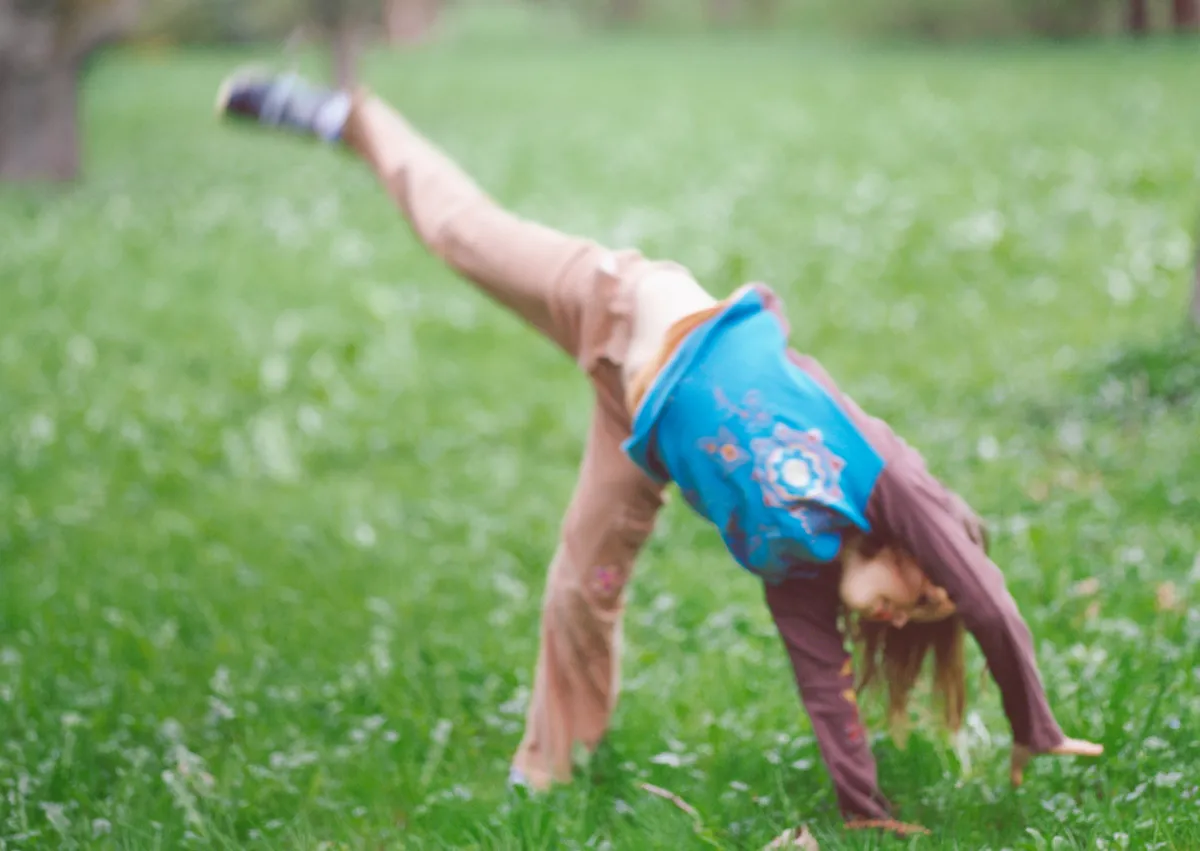
Proprioception: The Hidden Sense That Shapes Movement & Calm
Proprioception, often referred to as our “sixth sense,” is our body's ability to sense its position, movement, and force in space. This sense plays a vital role in nearly everything we do, from balancing on one foot to performing fine motor tasks like writing or picking up objects. But what exactly is proprioception? How does proprioceptive input benefit our bodies? How can we support our children in developing this sense? And what are some effective proprioception exercises for children and adults?
This post explores these questions and offers practical exercises to support and strengthen proprioceptive skills.
Keep reading to learn the following about proprioception:
What is proprioception & why proprioceptive input is important
5 signs of proprioceptive dysfunction
How proprioception supports regulation & calm
5 proprioceptive exercises for adults & children
What is Proprioception?
Proprioception is the sensory feedback system that allows us to move and orient our bodies without having to look at each movement. For example, typing while not watching each finger tap the letter we next need, or tying our shoes while having a conversation. Our fascia - muscles, joints, and connective tissues - contain proprioceptors, or specialized sensory receptors that constantly send information to the brain about body position, movement, and force.
If you want to get a little more nerdy about it, the sensory neurons that bring this information from our organs and fascia to our brain are called afferent neurons, while efferent neurons carry info from our brain to glands and fascia (including visceral facia or organs) to support action. As a result, we can walk, jump, dance, or navigate tight spaces with a sense of spatial awareness and control.
Imagine you’re walking up a flight of stairs. Even without looking at each step, proprioceptive input helps you gauge the height of each step, place your foot correctly, and adjust your weight to maintain balance. This is possible because of the proprioceptive sense, which interacts with other sensory systems to maintain coordination and awareness. Now think about driving, moving another object and our awareness that is required! Pretty amazing, isn't it?
Why is Proprioceptive Input Important?
Proprioceptive input is crucial for body awareness, stability, and coordination. It allows us to sense where our bodies are in relation to the surrounding environment, helping us avoid collisions, maintain balance, and regulate our movements. Proprioceptive feedback also enables us to control the amount of force we apply in everyday actions, such as picking up a fragile object without breaking it, gripping a pen lightly when writing, or needing to exert force to throw a ball.
For children, adequate proprioceptive input supports developmental milestones, motor skills, and focus. Children who struggle with proprioceptive processing may appear clumsy, struggle with balance, coordination, or apply too much or too little force in tasks. For adults, weak proprioception may impact physical performance and contribute to issues like joint instability or poor balance, particularly as we age.

5 Signs of Proprioceptive Dysfunction
When proprioception is underdeveloped or compromised, individuals may exhibit signs that suggest a need for increased proprioceptive input. Common indicators of proprioceptive dysfunction in children and adults include:
Clumsiness: Difficulty navigating spaces, tripping, or bumping into objects frequently.
Poor posture and balance: Struggling to maintain an upright position or constantly shifting for stability.
Difficulty with fine motor tasks: Problems with writing, tying shoelaces, or manipulating small objects.
Force control issues: Applying too much or too little force, such as pressing hard on a pencil or struggling to pick up a light object without dropping it.
Frequent seeking of physical activities: Often craving jumping, bouncing, crashing, or activities that provide deep pressure to the body.
Proprioceptive dysfunction often co-occurs with sensory processing challenges, making it essential to address with targeted proprioceptive exercises to support sensory integration and development, which we explore below.
How Proprioception Supports Regulation and Calm
Proprioceptive input is naturally calming and organizing for the nervous system. Activities that stimulate proprioceptors send signals to the brain, helping regulate arousal levels and emotional responses. This is why children often engage in activities like stimming, swinging, running, or jumping when they feel overstimulated or anxious—they are self-regulating through proprioceptive input.
For individuals with sensory processing challenges, anxiety, ADHD, or autism, regular proprioceptive input can help manage stress, improve focus, and increase body awareness. When we feel like our body can't do what we want it to do, it creates distress for anyone. With this compassion, we can better understand and support our children. Simple actions like squeezing a stress ball or carrying a heavy bag can serve as effective ways to self-regulate and maintain emotional balance - think fidget toys. I personally love crystals, as do many children I work with. They offer different sensations and can be a gentle form of stimulation.
Proprioception Exercises for Improved Body Awareness and Stability
Whether you're an adult looking to improve balance and coordination or a parent supporting your child's sensory development, these proprioception exercises can be beneficial. Below are five exercises for children and adults, many of which can be done with minimal equipment.
5 Proprioception Exercises for Children
Animal Walks: Pretend to be different animals, such as a bear, frog, or crab, to engage different muscle groups and body awareness. For instance, bear crawls (crawling on hands and feet) encourage weight-bearing through the limbs, strengthening core stability and enhancing spatial awareness. We use this often in our Children's Yoga classes to also support grounding, connecting to the earth and our bodies through interoception, or internal awareness of our bodies to calm.
Wall Pushes: Stand a few feet from a wall and press into it with both hands as if trying to push it down. This exercise provides deep pressure and engages the upper body, creating calming proprioceptive feedback. Another way this can be practiced is with those of similar heights seated back to back with feet on the earth, and slowly pushing into each other to come to standing. Parent and child may be able to do this but be gentle. With children we need to emphasize balance and noticing the other person's body.
Weighted Activities: Carrying a backpack with a small amount of weight or pushing a weighted cart are excellent ways to stimulate proprioceptive receptors. These activities engage core muscles, to promote stability and balance.
Jumping: Jumping on a trampoline or hopping up and down gives strong proprioceptive input and can improve balance. Think hop-scotch, weight transfer activities from foot to foot, skipping rope, and other challenges that involve jumping. For safety, supervise young children closely during these activities.
Obstacle Courses: Aside from just being fun, obstacle courses are perfect for proprioceptive stimulation! Set up items to crawl under, jump over, and balance on to challenge spatial awareness and coordination. My eldest and I have done this to get out excess energy on rainy days making obstacles after a nature scavenger hunt - puddle jumping anyone?!
5 Proprioception Exercises for Adults
Balance Exercises: Practice standing on one foot, progressing to closing your eyes or adding arm movements to increase the challenge. These exercises strengthen ankle proprioception and balance control. If you want to really challenge yourself, grab a wobble board!
Mindful movement: Yoga and Tai Chi are great for enhancing proprioception, as they focus on controlled, deliberate movements and mindful body awareness. Poses that involve balance, like Tree Pose or Warrior III, are especially helpful.
Strength Training: Lifting weights not only builds muscle but it also improves proprioceptive input by challenging the body's sense of weight distribution and muscle control. Compound exercises like squats, lunges, and deadlifts are particularly effective for proprioception, as we also work our core strength.
Core Exercises: Using a stability ball to perform exercises like seated leg lifts, planks, or bridges, requires and challenges our core engagement, which strengthens the body’s awareness and spatial positioning.
Walking on Uneven Surfaces: When I noticed my youngest had a weak core when she began walking, I immediately started taking her for more forest walks. At three she can now balance on one foot with the other leg high with ease. Walking on grass, sand, or other uneven surfaces forces the body to adapt to changing terrain, enhancing proprioceptive response and balance. This is particularly beneficial for older adults as it helps maintain coordination and joint stability.
Proprioception and Sensory Integration Therapy
For individuals with significant proprioceptive challenges, sensory integration therapy, which may include proprioceptive activities, can be a valuable tool. Occupational therapists often use sensory integration therapy to improve proprioceptive processing and provide tailored proprioception exercises. This therapy can help children with sensory processing disorder (SPD), autism, ADHD, or dyspraxia develop motor skills, increase focus, and better manage sensory input. I would recommend reading the post I mentioned above too, for greater insight.
Benefits of Proprioceptive Exercises
By engaging in regular proprioceptive exercises, you’re investing in physical coordination, emotional well-being, and sensory balance for yourself and your family. Regular proprioceptive input provides a wealth of physical and mental health benefits, including:
Improved balance and coordination: Proprioceptive exercises enhance postural control, helping individuals navigate their environment safely.
Greater spatial awareness: Regular proprioceptive stimulation increases body awareness, making movements more efficient and reducing the risk of injury.
Increased self-regulation: The calming effect of proprioception exercises can help manage emotional responses and support stress relief.
Enhanced fine and gross motor skills: Strengthening proprioception improves both fine motor skills, such as handwriting, and gross motor skills, such as running or climbing.
Building Proprioceptive Input Activities into Your Routine
Building proprioceptive activities into your day is an effective way to maintain body awareness, balance, and emotional regulation. Activities that provide proprioceptive input—like exercise, weight-bearing tasks, and even simple household chores—help strengthen this essential sense. In fact doing functional activities everyday like digging in the garden, pulling weeds, carrying groceries, and other household chores, all require proprioception. This is a great way as an adult to multi-task in this sense, and a fun way to engage children - until they aren't into doing chores anymore!
Proprioception might be one of our less commonly discussed senses, but it is vital for maintaining both physical coordination and mental resilience. Embracing proprioceptive exercises is a powerful way to support our body’s capacity for movement, adaptability, and self-regulation at every stage of life. If you have concerns about this, please reach out to your Doctor or Peadiatrician, who can refer you to specialists for testing and if needed, further support.
Want to Learn More?
Read "Understanding the 8 Senses & Sensory Processing Disorder"
Join Heart Centred Parenting to empower parents of sensitive & neurodiverse children
If you have any questions, please feel free to reach out!
🌺 Katie
Please note that this information is intended for educational purposes only and should not be considered medical advice. Always consult with a healthcare professional for personalized guidance.
